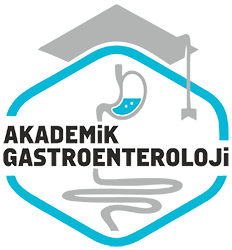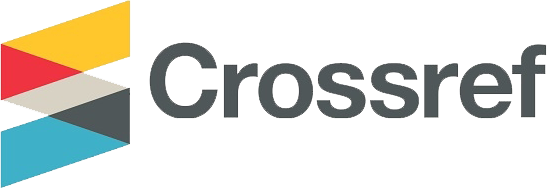Nisan 2015
Inoperabl malign özefageal darligin palyatif tedavisinde kullanilan kapli ve kapsiz kendiliginden genisleyen metalik stentlerin karsilastirilmasi
Comparison of covered and uncovered self-expanding metallic stents used in the palliative treatment of inoperable malignant esophageal strictures
- Ana Sayfa
- Sayılar
- Nisan 2015
- Inoperabl malign özefageal darligin palyatif tedavisinde kullanilan kapli ve kapsiz kendiliginden genisleyen metalik stentlerin karsilastirilmasi...
2 Department of Radiology Aksaray State Hospital, Aksaray
3 Department of Intense Medicine, Lokman Hekim Hospital, Ankara
Özet
Giriş ve Amaç: Bu çalışmanın amacı, inoperabl malign özefageal darligin palyatif tedavisinde kullanılan, kendiliginden genisleyen metalik stentlerin (self-expanding metal stent) etkinliginin arastirilmasi ve kullanılan kapli ve kapsiz kendiliginden genisleyen metalik stent tiplerinin karsilastirilmasidir. Gereç ve Yöntem:Non-curable malign özefageal striktür tanısı olan, palyatif tedavi için klinigimize basvuran 62 hastaya, Subat 2008 ve Kasim 2013 tarihleri arasında, floroskopi (Philips Integris Allura, Holland) kilavuzlugunda, kapli ve kapsiz kendiliginden genisleyen metalik stent uygulandi. Klinik etkinlik, isleme bagli komplikasyonlar ve sag kalim ile ilgili veriler retrospektif olarak toplandi Bulgular:Sekonder Girişimler dahil 81 adet kendiliginden genisleyen metalik stent %100 basari ile implante edildi. Islem öncesine oranla islem sonrasi disfaji skoru, her iki stent tipinde de belirgin azalmıştır. Isleme bagli mortalite orani %3,2 bulunmustur. Sekonder Girişim orani %25,8 olup kapli-kapsiz stent tipi ile sekonder Girişimler arasında istatistiksel anlamli bir ilişki saptanmamıştır. Sag kalim açısından, kapli ve kapsiz kendiliginden genisleyen metalik stent uygulanan hastalar arasında; ayrica kemoterapi-radyoterapi alan ve almayan hastalar arasında, istatistiksel anlamli farklilik saptanmadi. Kendiliginden genisleyen metalik stentlerin implantasyonundan sonra erken dönemde komplikasyon görülen hastalarda ve majör komplikasyonlar görülen hastalarda mortalite ve morbiditenin daha yüksek olduğu izlendi. Ancak komplikasyon tipi ve dönemi ile uygulanan kapli-kapsiz kendiliginden genisleyen metalik stentlerin tipi arasında istatistiksel anlamli bir ilişki saptanmadi. Sonuç:Malign özefageal darliklarin palyatif tedavisinde kendiliginden genisleyen metalik stentlerin, etkili ve güvenilir bir yöntem olduğunu söyleyebiliriz. Ancak uygulanan kapli veya kapsiz kendiliginden genisleyen metalik stent tipinin, kemoterapinin ve radyoterapinin, mortalite ve morbiditeye anlamli bir etkisinin olmadigini görmekteyiz.
Abstract
Background and Aims:The aim of this study is to evaluate the efficacy of self-expanding metallic stents used in the palliative treatment of inoperable malignant esophageal stenosis, and comparing covered vs. uncovered self-expanding metallic stent types. Materials and Methods:In our study, 62 patients seen in our clinic for palliative treatment, received covered or uncovered self-expanding metallic stents under fluoroscopic (Philips Integris Allura, Holland) guidance for malignant esophageal strictures. The study was a retrospective analysis of the records of these 62 patients who were treated between February 2008 and November 2013. Clinic ephicasis, complications related to the procedure, and data related with morbidity and mortality were collected retrospectively. Results:A total of 81 self-expanding metallic stents, including secondary attempts, were successfully placed. Dysphagia scores decreased significantly after treatment in both covered and uncovered stent types compared to pre-procedure scores. A procedure-related mortality rate of 3.2% was observed. Secondary intervention rate was 25.8%, and a statistically insignificant relationship was found between covered vs. uncovered stent types and secondary interventions. No statistically considerable differences were observed in survival rates among patients with covered and uncovered self-expanding metallic stents, and among patients receiving and not receiving chemotherapy-radiotherapy. Mortality and morbidity were higher in patients who experienced complications in the early period following self-expanding metallic stent implantation and in patients with major complications. However, no statistically significant relationship was observed between covered vs. uncovered self-expanding metallic stent type, complication type or time period. Conclusion:Self-expanding metallic stent is an effective and reliable method in the palliative treatment of malignant esophageal stricture. Additionally, self-expanding metallic stent type as well as chemotherapy and radiotherapy have no considerable effect on mortality or morbidity in these patients.



